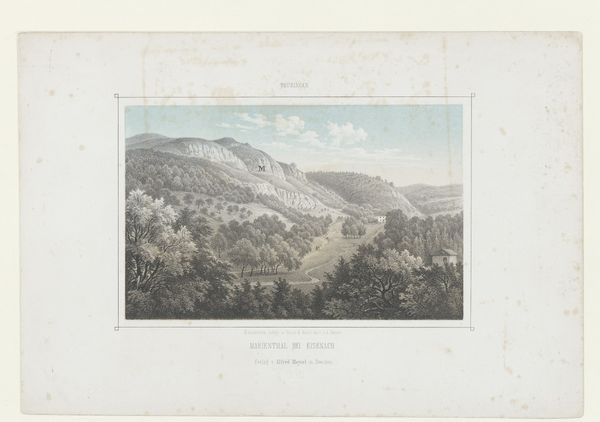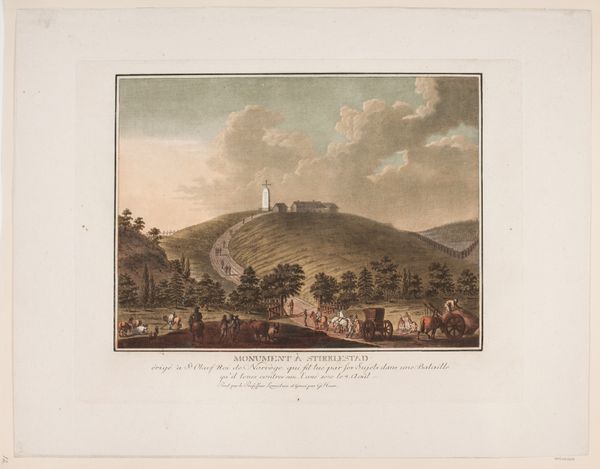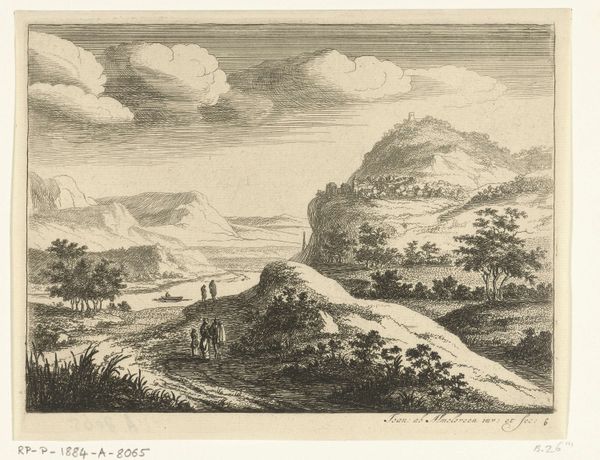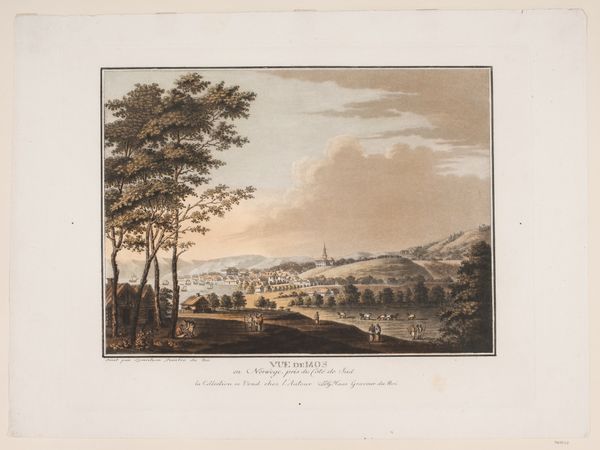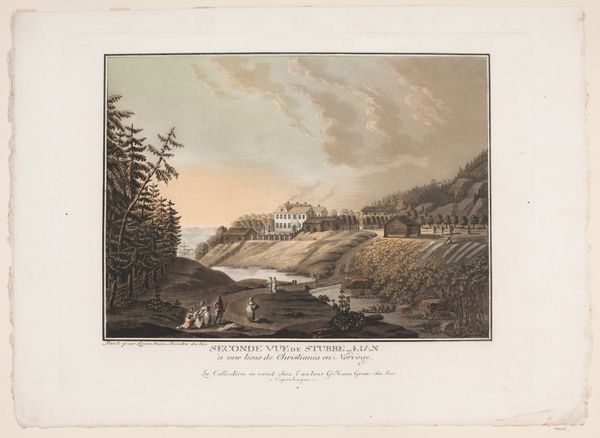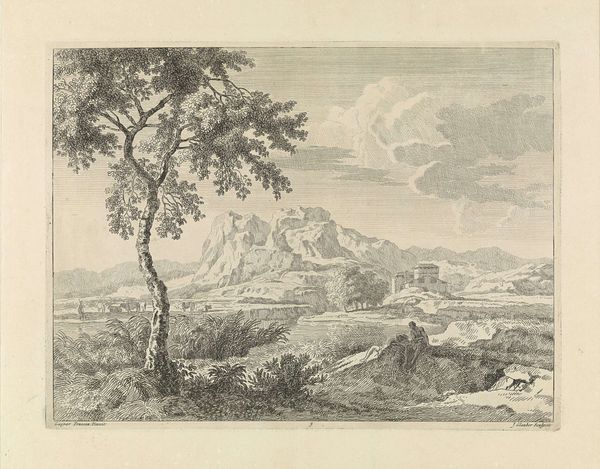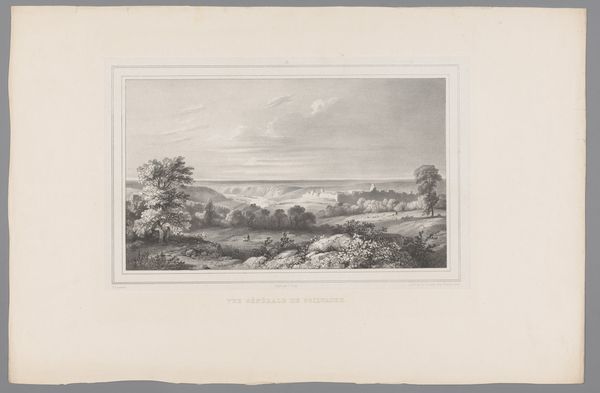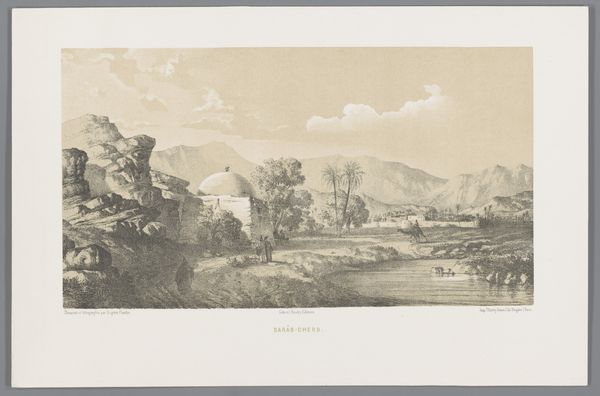
aquatint, print, watercolor
#
aquatint
#
water colours
#
ink painting
# print
#
landscape
#
watercolor
#
watercolor
Dimensions: 378 mm (height) x 488 mm (width) (plademaal)
Curator: What a fascinating piece. We're looking at "La citadelle de Frideriksteen" by Georg Haas, created between 1788 and 1792. It’s currently held here at the SMK. The artwork combines aquatint and watercolor, quite elegantly, I think. Editor: My immediate impression is of a peaceful, almost idealized landscape. The muted tones give it a nostalgic quality, and the composition feels very balanced, even serene. Curator: Indeed. The print medium would have allowed for wider distribution of this landscape view, catering to a growing market for picturesque scenery among the bourgeoisie. Consider how the labor involved in producing these prints affects its accessibility. Editor: The choice of watercolor and aquatint is interesting from a formal perspective. Notice how the washes of color create subtle gradations of light and shadow, enhancing the atmospheric perspective. The textures, even in print form, give the impression of depth and space. Curator: Absolutely. And the depiction of everyday life, the figures interacting near the house in the foreground, emphasizes a harmonious relationship between the people and their environment. This can be considered in the broader social context of the time—how did idealized representations of labor relate to the lived realities? Editor: The architecture itself contributes to the composition’s stability. That fortress in the background really anchors the scene. How it towers and dominates. Curator: The citadel represents power and authority, undeniably. By situating the military structure amidst the natural and the domestic, the artist invites us to consider how those aspects of life interact, are made to coexist. The making of those kind of social structures, captured in this media, opens itself to consideration. Editor: A point well-taken. Considering it is made in the 18th Century we get a peek into history. Overall, Haas presents a vision of the world in pictorial terms—ordered, structured and visually appealing. Curator: For me, it’s all about understanding the social function this piece had, where these images where displayed and in whose hands they fell. Editor: Very well said. We have come to terms with different approaches and interpretations of this artwork.
Comments
No comments
Be the first to comment and join the conversation on the ultimate creative platform.

